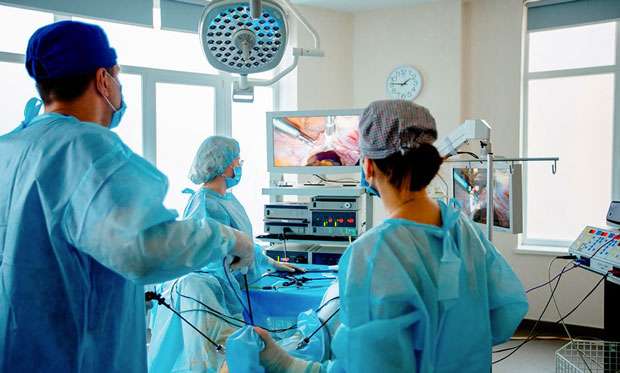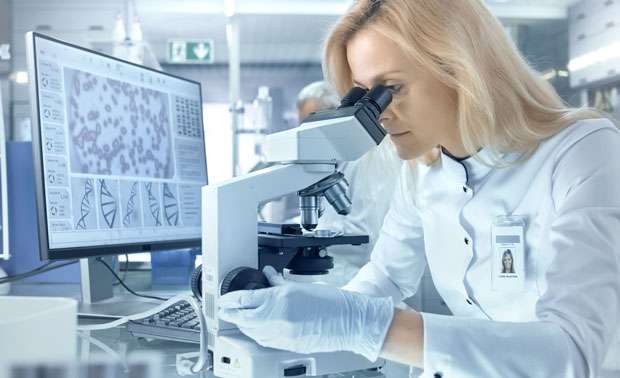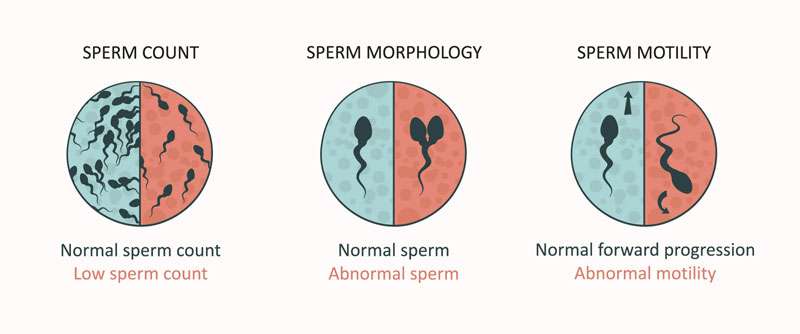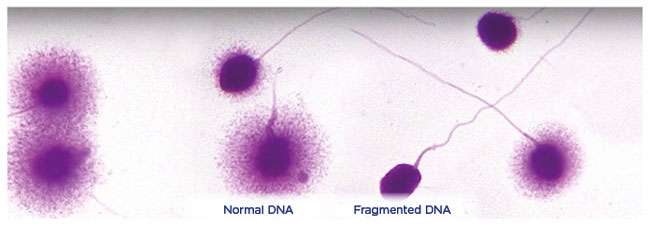The first step in the investigation of infertility in the couple begins with a consultation with the gynecologist. It is important for the couple to come together for this consultation, even if the causes of infertility seem to have its origins in one of the partners
The first consultation
Throughout the first consultation, the gynecologist collects various medical information of the couple before analyzing them. Several investigations will then be scheduled in order to determine a definitive diagnosis. It is also important at this stage to bring all medical documents relating to previous investigations or current treatments.

In general, the doctor asks for a complete biological assessment for the couple. For women, an ultrasound examination of the cycle, an evaluation of tubal patency or confirmation of ovulation are most often requested. For Monsieur, a blood test and a sperm analysis (spermogram, spermocytogram, ..) are most often asked.
Investigations in women
The hormonal assessment :
Carried out in the medical analysis laboratory to analyze the dosage of the different hormones involved in the menstrual cycle such as:
- The FSH / LH dosage that can detect ovarian exhaustion, pituitary anomaly or diagnose the presence of ovarian disease,
- The dosage of progesterone which tells us about the functioning of the corpus luteum and oestradiol to judge the quality of secretions from the ovaries,
- AMH measurement to assess the ovarian reserve,
- Thyroid hormones to detect certain pathologies related to infertility
Endovaginal ultrasound :
Is a completely painless and harmless medical ultrasound imaging test. Usually performed in the consultation room, this technique uses an ultrasound probe placed in the vagina to explore and check the entire uterus and ovaries. It allows in particular to know the size of the uterus as well as the thickness of the endometrium, to detect the possible presence of fibroid or cyst, or to measure the ovarian reserve by counting the follicles.
X-ray of the uterus and tubes by hysterosalpingography (HSG) and Hysterography :
Almost identical radiological examinations using a contrast product and carried out in the radiology room or in the examination room, by the gynecologist. Several X-rays pictures are generated during the procedure and are analyzed and described to the patient during an upcoming consultation. The examination is performed on an outpatient basis and the patient can usually return to work within an hour. The duration of the actual exam only lasts a few minutes. These techniques essentially make it possible to detect any pathologies of the uterine cavity or the tubes, to check the patency of the tubes (tubal obstruction) or to visualize the possible presence of adhesion.

Depending on the results obtained during the first investigations, the doctor may request additional examinations:
Hysteroscopy :
An examination carried out in the operating room allowing to visualize and investigate the uterine cavity and the arrival of the tubes using an instrument equipped with optics (a kind of camera) also called a hysteroscope, and connected to a monitor. This technique involves inserting a hysteroscope through the vagina to explore the interior of the uterus. It thus makes it possible to detect the presence of uterine abnormalities, to specify a diagnosis or to perform a biopsy (sample) of suspicious lesions. Depending on the context, hysteroscopy can be associated with surgical procedures (by laparoscopy) such as fibroid or polyp resection, curettage or even to treat certain malformations detected. The examination is usually performed under general anesthesia, or in some cases under locoregional anesthesia.
Laparoscopy or Minimally Invasive Surgery and Exploration :
is a technique that involves accessing the abdominal cavity without opening the wall, through small skin incisions using cameras and specific instruments. It allows to visualize the inside of the abdominal cavity and in particular to explore the ovaries, tubes and uterus, and thus to detect the presence of possible pathologies and to confirm or rule out an endometriosis. Laparoscopy is performed in the operating room under general anesthesia and usually lasts between 30 and 60 minutes. It is often associated with a hysteroscopy and makes it possible to operate on certain pathological lesions. This technique is referred to as a minimally invasive intervention involving reduced hospitalization time and faster patient recovery compared to traditional techniques (laparotomy)

Genetic analysis :
Depending on the family history of patients or something discovered during the investigation, the doctor may order a karyotype (arrangement of chromosomes) analysis in either partner to potentially detect a genetic defect. Altered genes (or chromosomes) can cause infertility. With a simple blood test, the doctor will work with a laboratory specializing in human genetics and send you the results of the examination afterwards.

Investigations in men
Spermogram and spermocytogram :
Semen analyzes that assess the fertilizing capacity of the sperm, including the volume of the ejaculate, the sperm concentration and the mobility, shape and quality of sperm. The partner is asked to give the laboratory a semen sample taken at the laboratory or at home. A period of abstinence of 3 to 5 days is necessary before the production of the sample. It is also recommended to urinate abundantly before the sample in order to clean the urethra of any bacteria that could disturb the examination. In the case of an abnormal spermogram, a consultation with a specialist in urology will be scheduled.

Hormonal analysis :
A review of the dosage of certain hormones in men that can cause problems with sperm production or erectile dysfunction. A failure that would be detected for the follicle stimulating hormone FSH, testosterone and prolactin could explain a poor spermogram.
In the case of repeated failure of assisted reproduction techniques, repeated miscarriages or unknown infertility, the doctor may order additional tests such as:
DNA fragmentation :
examination performed in a specialized laboratory that analyzes and potentially detects breaks and lesions in the genetic material of the sperm. High DNA fragmentation could explain the failure of term pregnancies.

FISH analysis :
genetic examination similar to the karyotype but for the sperm. It makes it possible to study the chromosomes of spermatozoa and thus detect a genetic anomaly and the risk of transmission to the offspring.
Depending on the case, the doctor may order other tests to determine the origins of male infertility, such as the Miller-Kürzrock (MK) test, a sperm culture or the MAR test.



